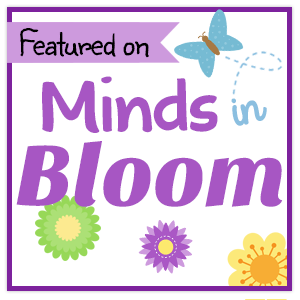It's January, and our annual celebration of the life and work of Dr. Martin Luther King, Jr. is just around the corner. Martin Luther King Day has not always been a national holiday, and during all the years when school districts were sorting through whether they would observe by having school or by not having school, Dr. King's family has always reminded us to "Make it a day ON, not a day OFF."
So what are you doing in your classroom to commemorate the life of this American legend? In case you are still looking around for a few ideas to add to your lesson plan, here are some you might like. The Martin Luther King unit has always been my favorite one to teach because it reaches my students at their core. I love watching them search deep inside of themselves for who they are and what they stand for, and then find a way to share that with all of us. Isn't that just what Dr. King did: reach deep inside himself to find what really mattered and then try to share it with the world?
Of course, my fourth graders know about the "I Have a Dream" speech long before they reach their year with me, but not many are aware that Dr. King carefully chose the Lincoln Memorial as the place to deliver that speech and why. The second line of this speech begins, "Five score years ago...", referring to the Gettysburg address, which of course begins, "Four score and seven years ago...", referring to the signing of the Declaration of Independence.
Wait.... What's going on here...could there be some connection across time and history between people who tried to make things better for all of us? Of course there was. Here's the sequence I present to my students:
1. Read the Declaration of Independence together. (You can even do a CLOSE READ of it if you must!)
2. Discuss how the Declaration was kind of like a letter from the Founding Fathers to England that "This is how it's going to be around here from now on."
3. Read the Gettysburg Address together. I use a beautifully illustrated picture book for that reading by Abraham Lincoln, of course, but with illustrations by Michael McCurdy.
4. Discuss how the Gettysburg Address was really a letter from Lincoln to the Founding Fathers on how it was going 87 years after the signing of the Declaration.
5. Next we get to the famous Dream speech. There are so many illustrated versions of this speech. Wasn't this speech meant to be a letter informing President Lincoln that we as a people had not really come as far along as his vision for us? That's precisely why it was delivered right in front of the Lincoln Memorial on August 28, 1963.
For children (and many of their teachers!) who were not here when the Civil Rights Movement was happening, when Dr. King made his speeches, or when he was assassinated, I have found this sequence to be a pretty effective way of placing King Day in its proper historical perspective.
To add personal meaning to each child, I challenge my students to write a letter to Dr. King, telling him how we're doing today as the beneficiaries of his dream. How is that vision working for each of us?
My complete lesson plan, which adds a craftivity, poetry, literature and video resources, along with student samples and a rubric which makes grading a snap, is available by clicking here:
You might also like this free download to keep the love flowing through Acts of Kindness the rest of the year:
Artwork at the top of this page by Maya, one of my sweet students, keeping the dream alive!






















Thank you for sharing Retta! Always looking for new and fresh ideas!
ReplyDeleteStuckey in Second
You're welcome! So glad you liked it!
DeleteI had no idea the 3 speeches/documents were tied together in this way! Thank you for teaching ME something new. :)
ReplyDeleteWhat great ideas, Retta! Thanks so much for linking up today. I teach 4/5, and I have a few close reads on these very topics. Great suggestions.
ReplyDeleteCarla